Shivangi Yadav
A Multi-domain Image Translative Diffusion StyleGAN for Iris Presentation Attack Detection
Oct 16, 2025Abstract:An iris biometric system can be compromised by presentation attacks (PAs) where artifacts such as artificial eyes, printed eye images, or cosmetic contact lenses are presented to the system. To counteract this, several presentation attack detection (PAD) methods have been developed. However, there is a scarcity of datasets for training and evaluating iris PAD techniques due to the implicit difficulties in constructing and imaging PAs. To address this, we introduce the Multi-domain Image Translative Diffusion StyleGAN (MID-StyleGAN), a new framework for generating synthetic ocular images that captures the PA and bonafide characteristics in multiple domains such as bonafide, printed eyes and cosmetic contact lens. MID-StyleGAN combines the strengths of diffusion models and generative adversarial networks (GANs) to produce realistic and diverse synthetic data. Our approach utilizes a multi-domain architecture that enables the translation between bonafide ocular images and different PA domains. The model employs an adaptive loss function tailored for ocular data to maintain domain consistency. Extensive experiments demonstrate that MID-StyleGAN outperforms existing methods in generating high-quality synthetic ocular images. The generated data was used to significantly enhance the performance of PAD systems, providing a scalable solution to the data scarcity problem in iris and ocular biometrics. For example, on the LivDet2020 dataset, the true detect rate at 1% false detect rate improved from 93.41% to 98.72%, showcasing the impact of the proposed method.
Synthesizing Iris Images using Generative Adversarial Networks: Survey and Comparative Analysis
Apr 26, 2024Abstract:Biometric systems based on iris recognition are currently being used in border control applications and mobile devices. However, research in iris recognition is stymied by various factors such as limited datasets of bonafide irides and presentation attack instruments; restricted intra-class variations; and privacy concerns. Some of these issues can be mitigated by the use of synthetic iris data. In this paper, we present a comprehensive review of state-of-the-art GAN-based synthetic iris image generation techniques, evaluating their strengths and limitations in producing realistic and useful iris images that can be used for both training and testing iris recognition systems and presentation attack detectors. In this regard, we first survey the various methods that have been used for synthetic iris generation and specifically consider generators based on StyleGAN, RaSGAN, CIT-GAN, iWarpGAN, StarGAN, etc. We then analyze the images generated by these models for realism, uniqueness, and biometric utility. This comprehensive analysis highlights the pros and cons of various GANs in the context of developing robust iris matchers and presentation attack detectors.
iWarpGAN: Disentangling Identity and Style to Generate Synthetic Iris Images
May 21, 2023Abstract:Generative Adversarial Networks (GANs) have shown success in approximating complex distributions for synthetic image generation and for editing specific portions of an input image, particularly in faces. However, current GAN-based methods for generating biometric images, such as iris, have limitations in controlling the identity of the generated images, i.e., the synthetically generated images often closely resemble images in the training dataset. Further, the generated images often lack diversity in terms of the number of unique identities represented in them. To overcome these issues, we propose iWarpGAN that disentangles identity and style in the context of the iris modality by using two transformation pathways: Identity Transformation Pathway to generate unique identities from the training set, and Style Transformation Pathway to extract the style code from a reference image and output an iris image using this style. By concatenating the transformed identity code and reference style code, iWarpGAN generates iris images with both inter and intra-class variations. The efficacy of the proposed method in generating Iris DeepFakes is evaluated both qualitatively and quantitatively using ISO/IEC 29794-6 Standard Quality Metrics and the VeriEye iris matcher. Finally, the utility of the synthetically generated images is demonstrated by improving the performance of multiple deep learning based iris matchers that augment synthetic data with real data during the training process.
CIT-GAN: Cyclic Image Translation Generative Adversarial Network With Application in Iris Presentation Attack Detection
Dec 04, 2020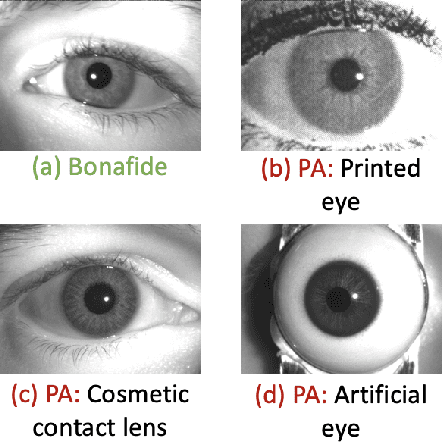

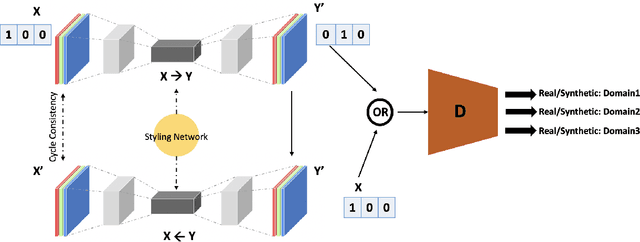

Abstract:In this work, we propose a novel Cyclic Image Translation Generative Adversarial Network (CIT-GAN) for multi-domain style transfer. To facilitate this, we introduce a Styling Network that has the capability to learn style characteristics of each domain represented in the training dataset. The Styling Network helps the generator to drive the translation of images from a source domain to a reference domain and generate synthetic images with style characteristics of the reference domain. The learned style characteristics for each domain depend on both the style loss and domain classification loss. This induces variability in style characteristics within each domain. The proposed CIT-GAN is used in the context of iris presentation attack detection (PAD) to generate synthetic presentation attack (PA) samples for classes that are under-represented in the training set. Evaluation using current state-of-the-art iris PAD methods demonstrates the efficacy of using such synthetically generated PA samples for training PAD methods. Further, the quality of the synthetically generated samples is evaluated using Frechet Inception Distance (FID) score. Results show that the quality of synthetic images generated by the proposed method is superior to that of other competing methods, including StarGan.
* 10 pages (8 pages + 2 reference pages) and 10 figures
Some Research Problems in Biometrics: The Future Beckons
May 12, 2019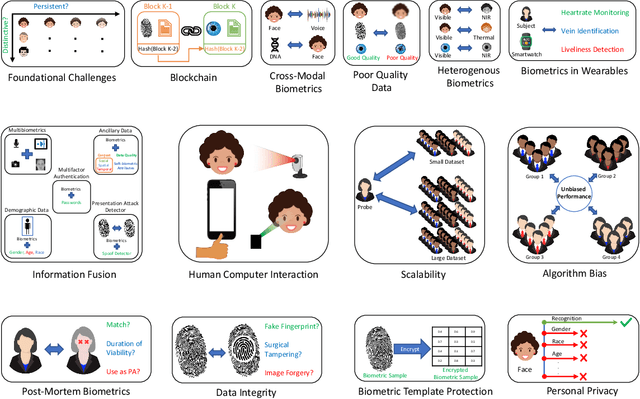

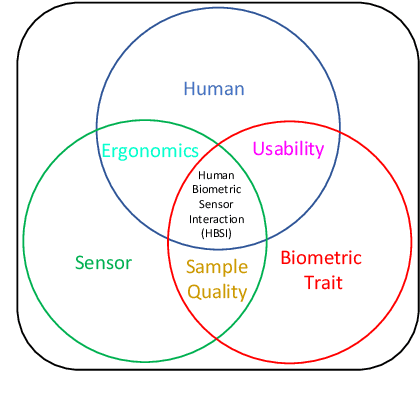
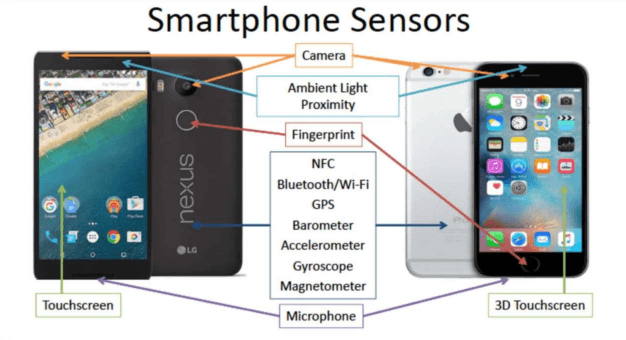
Abstract:The need for reliably determining the identity of a person is critical in a number of different domains ranging from personal smartphones to border security; from autonomous vehicles to e-voting; from tracking child vaccinations to preventing human trafficking; from crime scene investigation to personalization of customer service. Biometrics, which entails the use of biological attributes such as face, fingerprints and voice for recognizing a person, is being increasingly used in several such applications. While biometric technology has made rapid strides over the past decade, there are several fundamental issues that are yet to be satisfactorily resolved. In this article, we will discuss some of these issues and enumerate some of the exciting challenges in this field.
 Add to Chrome
Add to Chrome Add to Firefox
Add to Firefox Add to Edge
Add to Edge